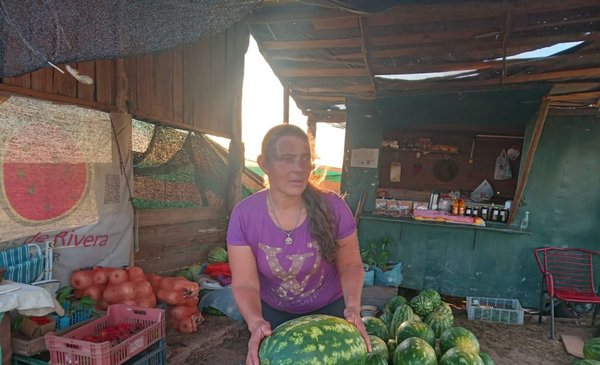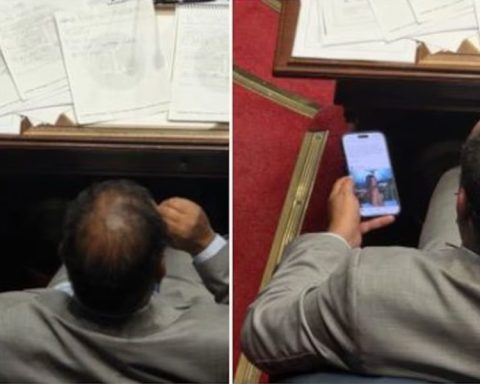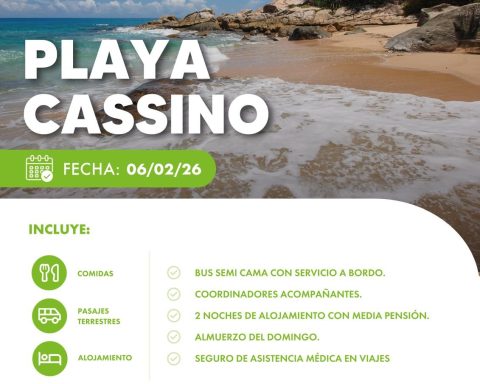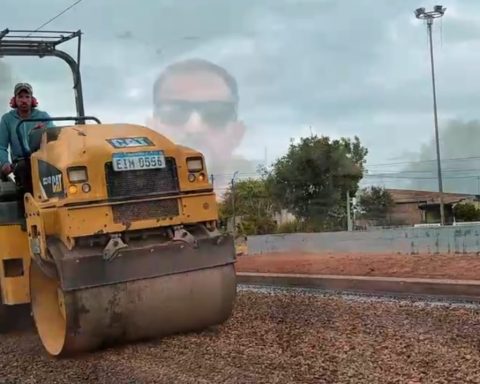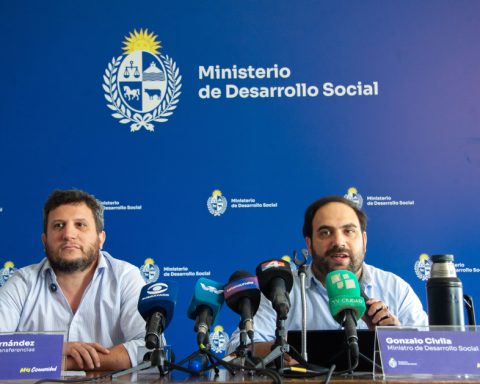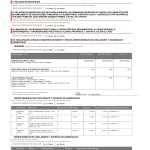Some sell piglets or firewood, others produce pumpkins or sweet potatoes, there are those who provide services for forestry companies, others do beekeeping and with this variety as a framework they all have something in common: they produce watermelons and for eight or nine of the 12 months of the year they have to figure out how to live on something else.
For many years Jorge Fabeiro It produced watermelons in the core area of the industry in the country, in Tranqueras (Rivera), but now it does so far from there, in Piriápolis and Pan de Azúcar (Maldonado) and with smaller volumes.
“It is no longer an activity to live only from it”, lament. He still continues to develop it, because it is what he knows how to do and is passionate about, and to keep the supply to customers who continue to demand the product and with whom he has extensive ties, such as Grupo Disco and Tienda Inglesa, but it also happens with other clients, “of the boys”.
“I do it with the idea that he will leave me some money,” he admitted, but above all “out of love for himself” and even out of curiosity: he is the creator of watermelons in the shape of the map of Uruguay, an innovation that he has tried to get registered. by the Guinness book.
Jorge Fabeiro and an innovation: watermelons shaped like the map of Uruguay.
This productive activity is complemented by others related to the purchase and sale of land and property repairs.
“If the watermelon producer wins the lottery and has a positive harvest, he makes a few pesos that allow him to spend the year in peace, but if things go wrong –and that happens a lot– he has a bad time,” he said.
For this reason, in Rivera, where 80 to 90% of the production of this fruit sector is located, most of the watermelon producers do something else. There are “very few” who are only dedicated to watermelon. The normal thing is to combine this work with the raising of cattle or sheep, many work in forested areas cleaning mountains, pruning or removing leftover firewood, some have a truck and do freight… “there is everything”.
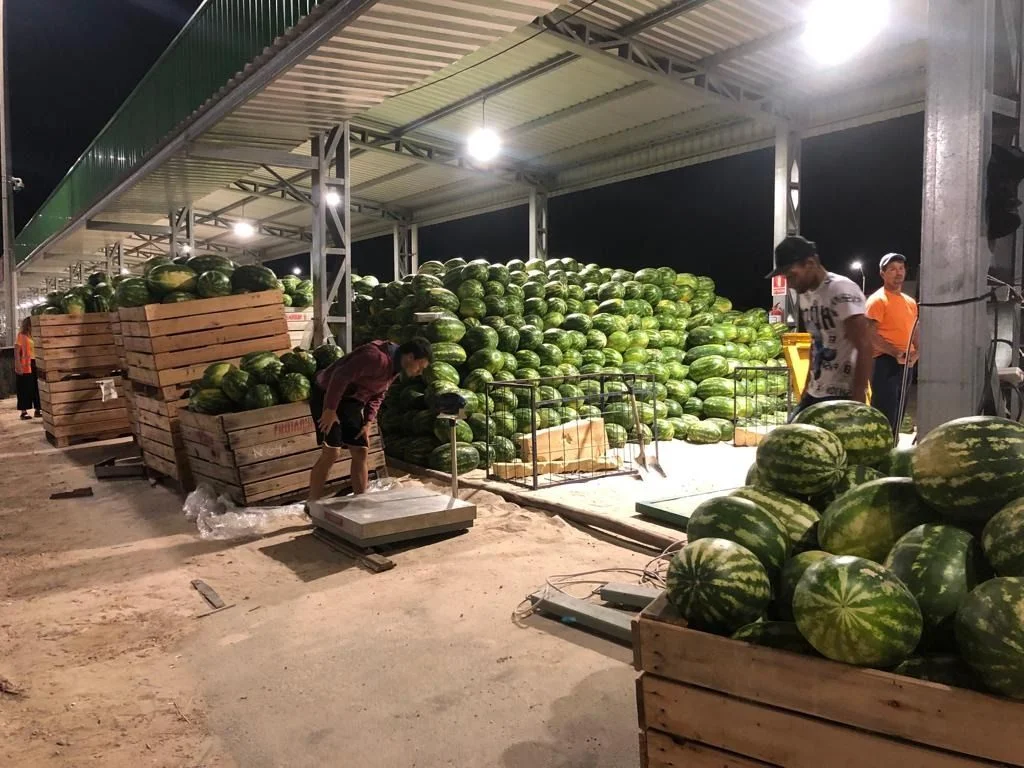
The post of Andrés Latour, at the UAM.
Andrew Latour is a wholesaler in the Metropolitan Agrifood Unit (UAM). A large producer in Rivera gives him the merchandise on consignment and he sells it to sellers in the final segment of the chain, such as vendors or grocers.
That producer – one of the big ones – In addition to the watermelon category, he is a rancher and owns three forestry machines with which he provides services to foresters..
Small producers, who are the vast majority, “some have land, but almost all rent, so not only do they have to cover the cost of production and family support with watermelons, they also have to pay rent,” he said.
This has been made very difficult by the value of the lease – it can demand more than US$ 500 per hectare – and for the watermelon producer it is very difficult to compete with other bidders for the fields, such as forestry companies, for example.
On how those who have income from watermelon from December to March subsist in the rest of the year, he said that there are some that produce sweet potatoes or squash, which is what works best on those soils, there are those who are dedicated to beekeeping and others to livestock.
One problem, he admitted, is income instability. This last year, on average, watermelons reached $11 to $12 per kilo, a good value, but a year before, the average was $4 to $6 per kilo, and that is far from covering costs.
When there is no margin, the producer has an adverse year, because in addition to covering everything the family needs, they need to invest again to continue producing.
A key issue, but one that cannot be handled by the producer, is that the ideal is that the weather is good so that the production is of quality, but not excessive, because precisely the abundance of supply in a limited market generates a fall in the values that punishes those who are at the beginning of the productive chain.
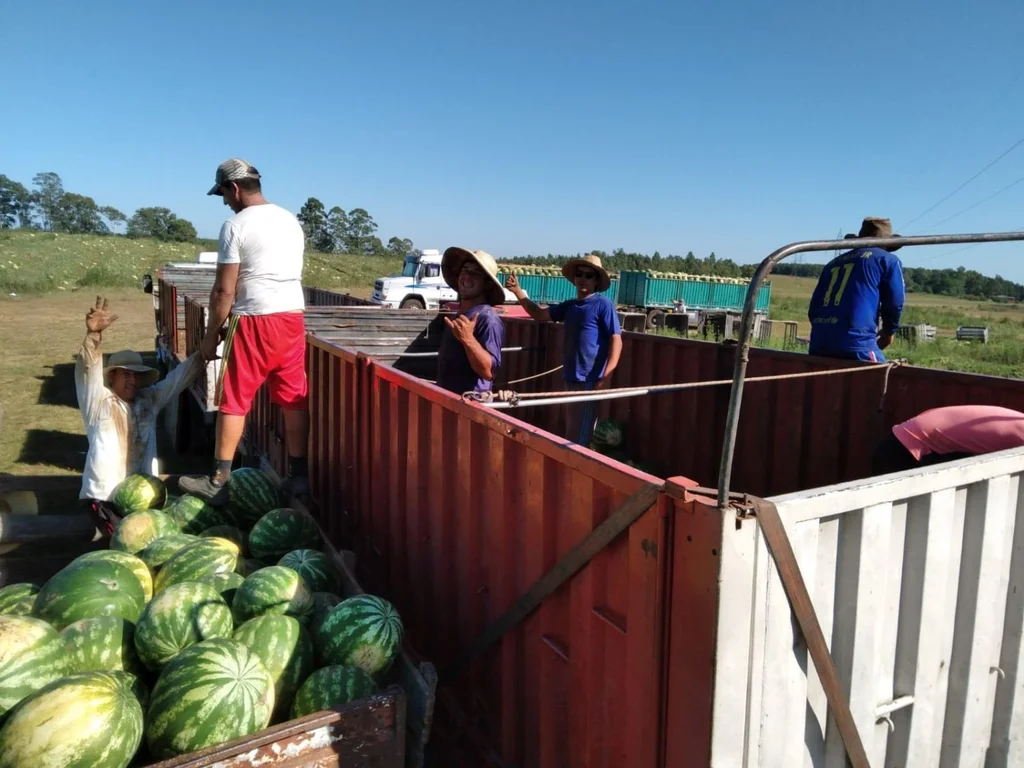
Harvest of watermelons, in the field of Mario Rodríguez.
mario rodriguezanother of those consulted about this reality, said that when the income from the sale of watermelons is cut, at the end of each harvest, in his case he sells firewood “To fight for the rest of the year, we send white and red eucalyptus chips to Montevideo, but that is also complicated, it is getting more and more difficult to get firewood”.
In his case, he usually starts harvesting watermelons and selling on December 5 or 6 and extends that – “when there is a bit of luck” – until the beginning of March.
It produces in Parada Medina, in Cuchilla Tres Cerros. He works in a rented field, with his wife and three children. She sells everything they ask for to Grupo Disco and takes the rest of her watermelon to the UAM.
Last summer things went well for him, he sold from $14 to $16 a kilo, but a problem has already arisen for the accounts of the new campaign: the price of fertilizer skyrocketed, which from one year to the next, he remarked, went from US$ 500 to US$1,500 a ton. Diesel also went up a lot, he added.
When each harvest closes, you have to pay costs and reserve money for expenses that will come. For the August sowings, buying the seed, which is 100% imported (from Brazil, Chile, Peru and even Japan), is an unavoidable investment every year.
As cheap, he indicated, the productive cost can be located at $ 8 per kilo of watermelon. In the recent cycle it did well, but in the previous one it went very badly: it received $4 per kilo on average because there was a supply that greatly exceeded the demand and the price fell.
That the producer does well is not only valuable for him, but also for the people he hires. In the case of Mario, during the planting he needs to hire, also for cleaning and fertilization tasks, as well as in the harvest. On 30 hectares he sometimes has 10 to 20 employees, depending on the time of the crop cycle.
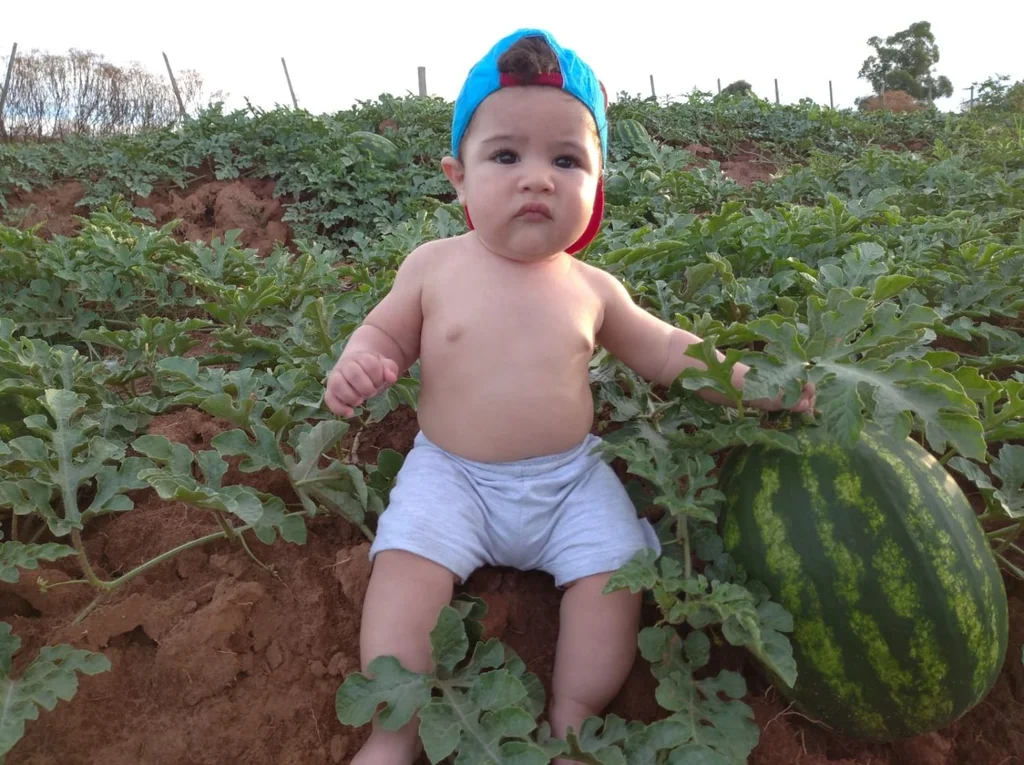
Emmanuel, the grandson of Mario Rodríguez, growing up among the watermelons.
claudia cuebas is an ideal example of a small producer. He produces on a seven-hectare farm, where he grows one or two hectares with watermelon that he sells directly at his stand on Route 5, at km 469, just over 20 km from Rivera.
From the first week of December until the last harvests in March, he is there every day. In the rest of the year, he makes jams with merchandise he keeps and raises pigs for the sale of suckling pigs.
“It’s a family job, we’re very young, right now I was building a paddock to enclose two sows that come from breeding,” he said.
He explained that when the watermelon harvest is over, he manages to do a little of everything: “I continue to garden with other fruits and vegetables, I make sweets like watermelon jam, I produce native seeds and I raise pigs”.
There are four of them at home and any extra expense, to fix something or for what their two children need, “comes out of the watermelon,” he admitted.
Claudia bitterly recalled that the 2021 summer harvest was very bad, “I couldn’t even sigh, it’s better to forget it.”
That of the recent summer “was better, the prices were more conserved, because sometimes there are years when the harvest advances and the price is turned around so much that it is not even worth taking the watermelon out of the field.”
In the summer of 2022, it started selling at $16 a kilo when the stall opened on December 3 and went down until it stood at $4.5 a kilo or $3 when the purchase was for many kilos.
The stand that opens every day in the summer, later works on specific days, because he has to work on the farm and it is convenient to open only if there are prospects for good sales.
The watermelon jam is sold at $200 for a 600-gram jar. A kilo of slaughtered pig costs $250, especially at the end of the year, but he also has piglets when they ask him for the rest of the year. “I do everything, I do it alone and with a lot of pride, but my earning (sic) is the sale of watermelons at the roadside stand and the sale of piglets”he concluded.
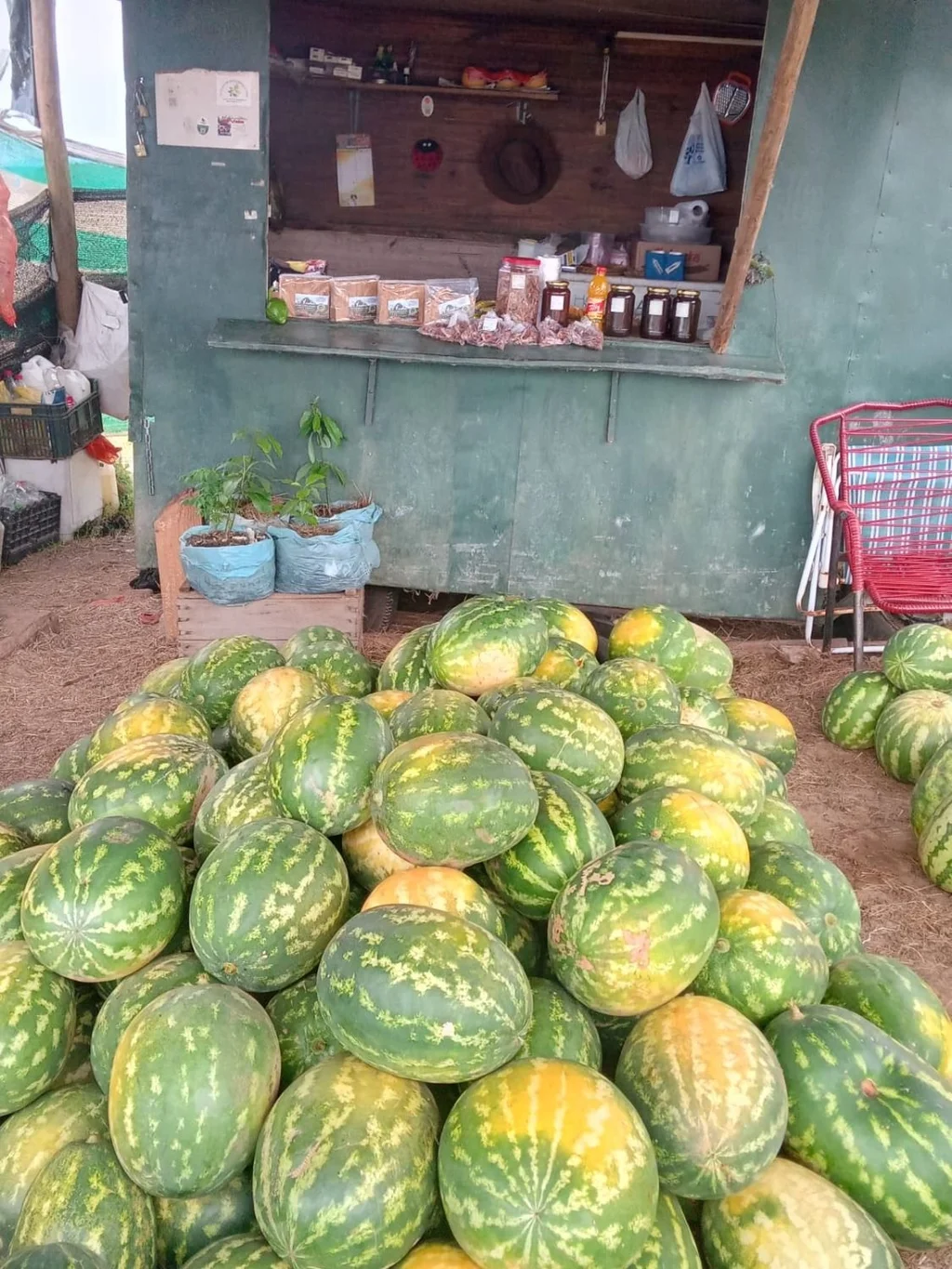
Claudia does everything, but the watermelon generates the most relevant income.
watermelon day
Fabeiro informed that the steps are advanced so that in addition to having the Departmental Watermelon Day, approved this year by the Rivera City Hall, there is also the National Watermelon Day. The chosen date is the second Sunday of February, closing day of the Watermelon and Afforestation Festival organized by the Rotary Club of Tranqueras –the 30th edition will be held in 2023–. He added that in the next few days the requests will be sent to the corresponding ministries.
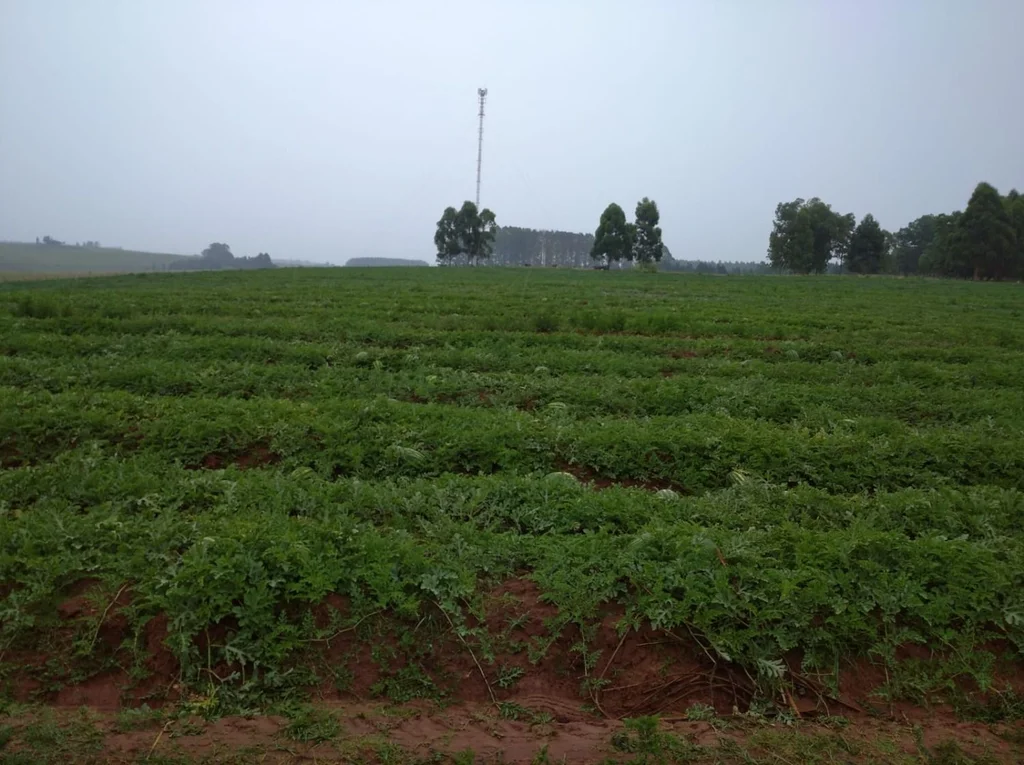
Production is concentrated in Tranqueras.
